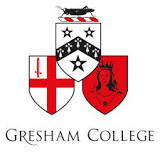
Cataract is an opacity in the crystalline lens behind the pupil. As it progresses sight become affected and eventually afflicted individuals will become blind. (fig 1).
Fig 1. Cataract: An opacity of the crystalline lens.
Treatment of cataract is by surgery to remove the opacity from the line of sight. In ancient times cataract was believed to be caused by a solidifying of a humour known as hypochymia, or suffusio, in the space in front of the crystalline lens. Displacement of this opaque material would therefore allow the organ of sight, thought to be the crystalline lens, access to the visual ray, thus restoring sight. The operation was couching, which we now know was actually displacement of the opaque cataractous lens into the eye, clearing the pupil and allowing blurry non-focused images to seen.
The operation was described in detail in an ancient Sanskrit manual for surgeons called the Susruta Samhita. The date of the part of the text dealing with cataract surgery is uncertain. 200 BCE seems reasonable, but some scholars argue for an earlier date. About the same time a remarkably similar operation was being performed in Hellenistic Egypt. The procedure was described by the Roman compilator, Celsus, writing about the time of Christ.
The procedure required exceptional dexterity, and became an operation performed by dedicated specialists, subsequently known as oculists. Often these were not formally trained in Medicine.
Eye diseases were comprehensively studied and written about in Arabic. Couching was skilfully performed by dedicated oculists and described in Medieval Arabic texts and passed to Western Europe via translations of Arabic texts in Sicily and Spain.
Widely practised by itinerant oculists, couching became notorious. Associated with showmanship (it is indeed dramatic to instantaneously restore sight to a blind person) the operation was performed by a number of interesting characters. Many of these surgeons were denounced as charlatans or quacks by their medical contemporaries. Outstanding in a field of extraordinary characters was John (Chevalier) Taylor. Undoubtedly of exemplary skill, his boastfulness won him few friends. He was also responsible for the unsuccessful operation on the musician J.S. Bach. In fact it is not always mentioned in the history books that many initially successful couching operations were followed some days or weeks later by a progressing inflammation and return to blindness. From King John of Bohemia in Medieval times to Samuel Johnson's maid in the enlightenment, the catalogue of unsuccessful couchings grew larger.
Why was the operation so popular then? Well the prospect of permanent blindness from cataract was certainly a driving force for potential patients. The practitioner had to understand eye disease and ensure he only selected those who had true cataract. Operating on other causes of blindness, called gutta serena, was doomed to failure and was risky for the patient. It was estimated by Ellis in the 19th century that about 20% of couchings by itinerant surgeons in India led to a successful result.
Medicalisation of the procedure and formal training improved results, but the operation was doomed, soon to be replaced by extraction of the lens. This was a safer procedure despite the large incision, and patients had a better chance of having sight restored.
Daviel devised the operation of cataract extraction in 1748, and soon the best surgeons around the world began to adopt and modify the procedure. Couching held on however as it was less difficult and some surgeons were achieving good results and didn't want to change. Indeed, couching was regularly performed by native surgeons in India in the 19thand in Africa well into the 20th century.
Fig 3. Extraction of cataract: A knife is passed through the cornea across the eye and swept upwards to open the eye. The cataract is then expressed leaving the eye without a lens (aphakic).
The most important development in cataract surgery was the invention of the intraocular lens by Ridley in 1949. This corrected the blurry vision of patients who had undergone removal of the cataract and despite initial hostility, went on to become the single most important invention in surgery. Rapid developments in technique and eventually adoption of Kelman's ultrasound method improved results. This allowed people with significant visual problems to become candidates for surgery, when previously they would have been counselled to wait until the "cataract ripens". A completely redundant concept in the 21st century.
Figure 4: A patient with a Ridley lens. 4b: a modern small incision lens
Refinements of the procedure have allowed the operation to be performed as a day case with full correction of vision. Complication rates are low and recovery is quick. Usually anaesthesia is with drops sometimes supplemented with a local injection if needed.
Newer lenses are being developed continuously. These include lenses to correct for astigmatism, yellow lenses to block blue light, lenses that allow accommodation, those focus for near and for far distance and more recently light adjusting lenses.
Within one working generation, the advent of smaller incisions faster rehabilitation and even safer surgery has become standard, transforming an ancient operation into the miracle of modern cataract surgery.